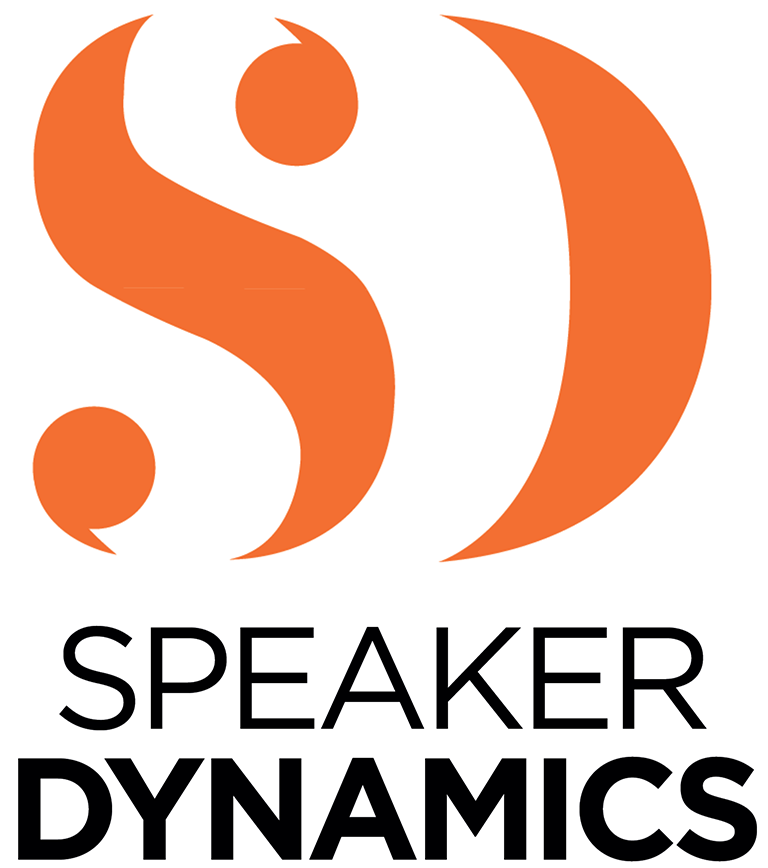Any presentation coach will espouse the virtues of good eye contact with your audience, so what do you do when you can’t see your audience?
The most common practice for the novice is to never, ever take one’s eyes away from the camera lens. Imagine if that happened in real life, off camera. You are in conversation with someone and he or she locks eyes with you and absolutely refuses to let you go for minutes at a time. Not only can it be unnerving, but it can also be downright creepy. Nonstop eye contact with the camera is like drilling your gaze into your viewers’ heads.
Look Away
Looking away from the lens can feel like an impossible feat, especially if you are reading from a teleprompter, but let’s put it in the context of a conversation off camera.
You naturally shift your gaze throughout a conversation, even if it’s a subtle glance upward when you are trying to recall a bit of information.
Sure, the majority of your time is spent looking into the eyes of the person with whom you are speaking, but that periodic break in eye contact is a welcome one. Otherwise, it would be exhausting for both the speaker and the listener.
According to Carol Kinsey Goman, author of The Silent Language of Leaders: How Body Language Can Help—or Hurt—How You Lead (Jossey-Bass, 2011), “Too much eye contact is instinctively felt to be rude, hostile, and condescending; and in a business context, it may also be perceived as a deliberate intent to dominate, intimidate, belittle or make ‘the other’ feel at a disadvantage.”
The argument against staring down your viewer is a forceful one, but how do you pull yourself away?
A break in eye contact can be most effective when associated with a pause. By combining a look away with a pause, it can signal to your audience that you are transitioning to a new concept or that you are gathering your thoughts before proceeding.
However, a word of warning: breaking eye contact should not be a big gesture. You would be amazed how dramatic a shift in eye line of only a few inches can appear to your viewer. If you are in a formal studio setting, a glance to just below the lens will suffice. If you are using the camera on your phone or laptop, look to the bottom of the device for a half second before looking back at the lens.
Things are Looking Up
After being burned too many times by being cued to the wrong camera as I anchored a live newscast, I took it upon myself to confirm which camera was being used by consulting the monitors embedded in the desk. Right before I started to read the story off the teleprompter, I would look down at the shot and quickly assess what camera was live based on the background.
If it was camera three, I would look for the weather set. If it was camera one, I would look for the skyline backdrop. Only then would I look up and start to read the next story.
Looking up at the start of each story was a product of protecting myself from being caught off guard, but it also served as a built-in break in eye contact, which appeared natural and eliminated the awkwardness of anticipation by averting my gaze until a split second before speaking.
You can also use these few seconds right before you perform to gather your thoughts, visualize your viewer, and channel any nervous energy, and you don’t need to look into the camera to do it. Instead, look slightly below the camera until you are ready to speak. Then, look up just a beat before saying your first words.
That eye movement will signal to your audience that you are ready to engage and will inject more energy into your presentation than if you had spent those moments beforehand just staring into the lens.
Other Common Eye Contact Errors
- Looking off to one side every once in a while is fine, but if you make a habit of looking to your left or right too much, you will look unsure of yourself and your content. Plus, your viewer might wonder what you are looking for—is someone coming to get you?
- Another no-no is making eye movement too obvious. A prolonged look away from the camera can cost you the connection you have with your audience. They might think you are done with your presentation and tune out.
- Breaking eye contact should not require your head to swivel in the direction of your gaze. If it does, the movement will look contrived, manufactured, and out of place—almost as if your attention were diverted somewhere far off camera.
- If you absolutely can’t pull yourself away from the camera lens, there is another option that will diminish the “deer in the headlights” look. You can change the angle of your head relative to the camera. Watch one of your recorded performances. If your shoulders stayed square to the camera and your head never moved, you will want to incorporate some variation into how you physically address the camera. Try loosening up your shoulders and neck and allow your head movement to reflect your content. Be careful not to lift your chin too much, though, to avoid looking pompous. Remember the rule about movement toward the camera. A slight leaning in with your head and a lowering of the chin creates intimacy.
Learn More: On-Camera Coach
If you found this information valuable, check out my book, On-Camera Coach: Tools and Techniques for Business Professionals in a Video-Driven World, now available from Wiley Publishing. On-Camera Coach aims to take the mystery out of communicating through the camera and provides specific tips and techniques that can make your message sing—and you, the messenger, feel confident in a job well done.

